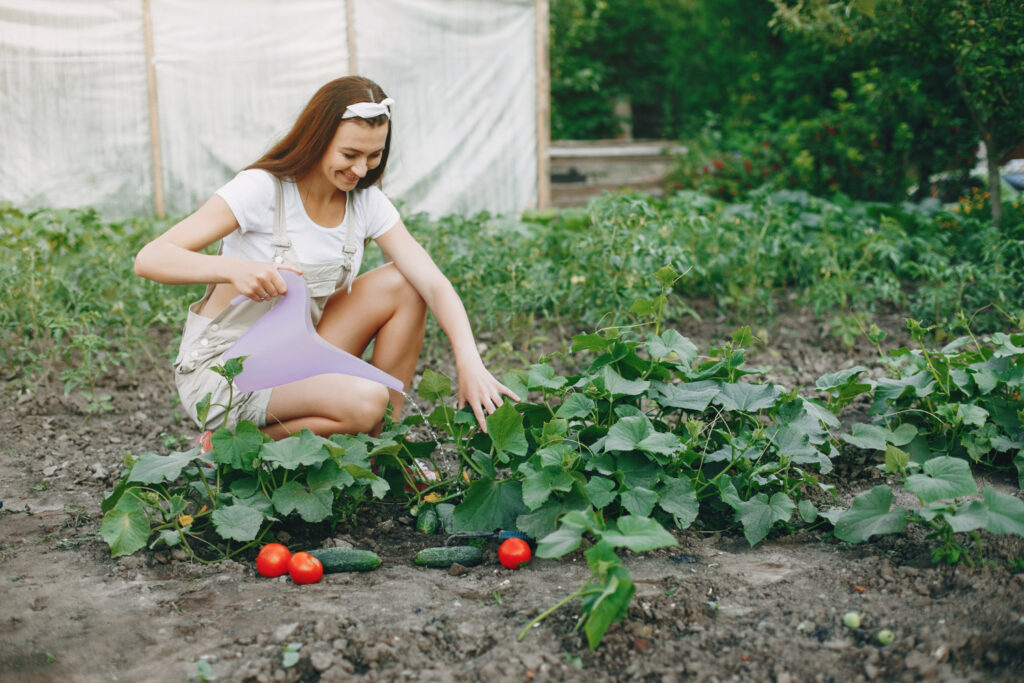Introduction: Embracing the Bounty of Summer
As the sun climbs higher in the sky and temperatures rise, the summer season beckons gardeners to sow the seeds of abundance and harvest the bounty of the earth. A summer vegetable garden promises a cornucopia of fresh, flavorful produce, from juicy tomatoes and crisp cucumbers to sweet corn and vibrant peppers. In this guide, we’ll delve into the essentials of planting a summer vegetable garden, guiding you through the process of selecting, sowing, and nurturing a garden that will yield a delicious harvest all season long.

Choosing Your Garden Site
Selecting the right location for your summer vegetable garden is crucial for success. Choose a sunny spot with at least 6-8 hours of direct sunlight per day, as most vegetables thrive in full sun. Ensure the soil is well-draining, fertile, and free from weeds, rocks, and debris. Consider factors such as proximity to water sources, access to garden tools, and protection from strong winds or pests when choosing your garden site.
Planning Your Garden Layout
Before planting, take time to plan your garden layout, considering factors such as plant spacing, crop rotation, and companion planting. Group vegetables with similar water, soil, and sunlight requirements together to optimize growing conditions and maximize yield. Leave ample space between rows and plants to allow for air circulation, easy access for watering and harvesting, and future plant growth.
Selecting Your Vegetable Varieties
Choose vegetable varieties that are well-suited to your climate, soil conditions, and growing preferences. Consider factors such as days to maturity, disease resistance, and flavor when selecting varieties for your garden. Opt for heirloom or open-pollinated varieties to preserve genetic diversity and save seeds for future seasons. Popular summer vegetables to consider include tomatoes, cucumbers, peppers, zucchini, squash, beans, and eggplant.
Preparing the Soil
Prepare the soil for planting by loosening it to a depth of 6-8 inches using a garden fork or tiller. Remove any weeds, rocks, or debris and incorporate organic matter such as compost, aged manure, or organic fertilizer to improve soil fertility and structure. Perform a soil test to assess pH and nutrient levels and make any necessary adjustments based on test results.
Planting Your Seeds or Seedlings
Once the soil is prepared, it’s time to plant your seeds or seedlings. Follow spacing recommendations provided on seed packets or plant tags, and plant seeds at the appropriate depth for each vegetable variety. Water seeds thoroughly after planting to ensure good soil contact and promote germination. If using transplants, gently remove plants from their containers and plant them at the same depth as they were in their pots, then water well to help them settle into their new home.
Providing Care and Maintenance
Throughout the growing season, provide your summer vegetable garden with the care and maintenance it needs to thrive. Water plants deeply and regularly, especially during periods of hot, dry weather, and mulch around plants to conserve soil moisture and suppress weeds. Monitor plants for signs of pests or diseases and take prompt action to address any issues that arise. Fertilize plants periodically with a balanced organic fertilizer to provide essential nutrients for growth and development.
Harvesting and Enjoying the Fruits of Your Labor
As summer progresses, your garden will come to life with vibrant foliage, colorful blooms, and an abundance of fresh vegetables ready for harvest. Harvest vegetables when they are at peak ripeness for the best flavor and nutritional value, and enjoy them fresh from the garden or preserved for later use. Regular harvesting encourages continued production and ensures a steady supply of fresh, healthy produce all season long.
Conclusion: Nurturing the Garden of Plenty
Planting a summer vegetable garden is a labor of love, a celebration of the earth’s bounty, and a testament to the joys of gardening. By choosing the right site, planning your layout, selecting the best varieties, preparing the soil, planting with care, providing ongoing maintenance, and harvesting with gratitude, you can cultivate a garden that nourishes your body, mind, and soul throughout the summer season and beyond.
Happy gardening, and may your summer vegetable garden be a source of abundance, vitality, and joy for you and your loved ones!
Checkout: Top Free Home Gardening Books